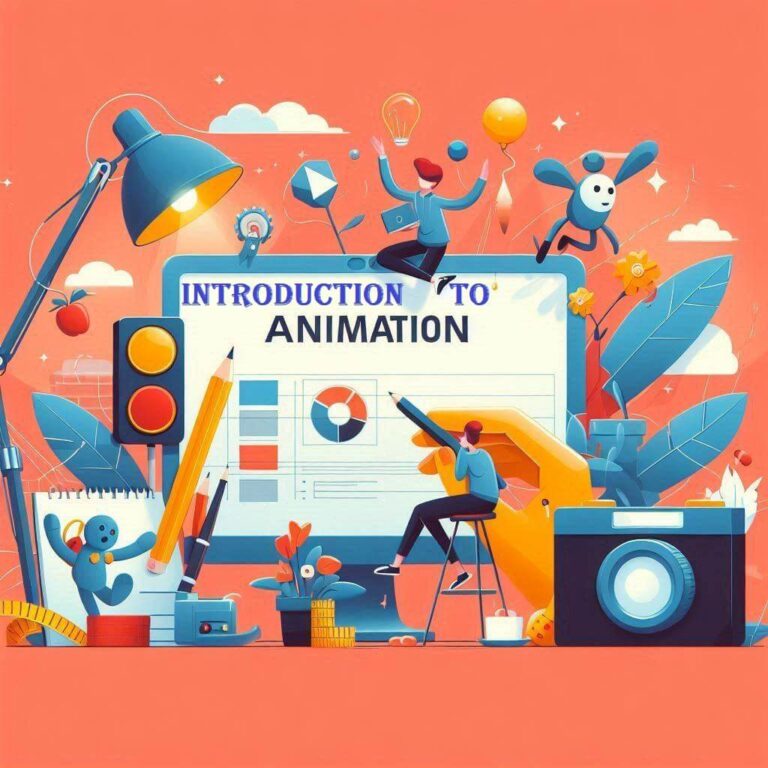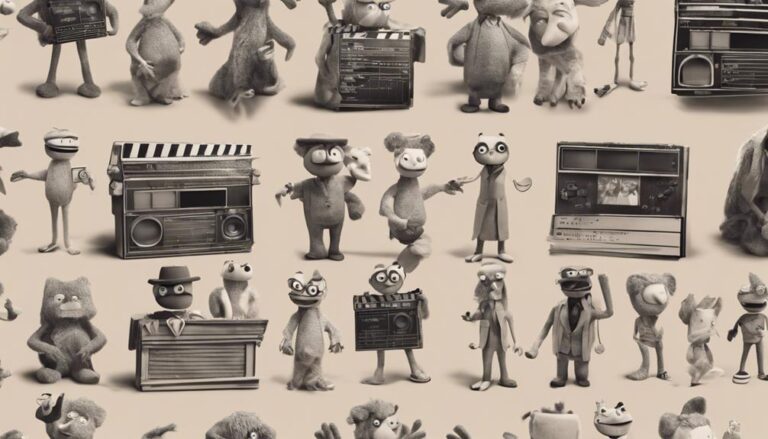Demystifying Animation Festival Submission Review Process
As you prepare to submit your animation to a festival, you're likely wondering what happens behind the scenes. The review process is often shrouded in mystery, leaving you to wonder what sets apart the selected films from the rejected ones. You've probably heard that festivals receive thousands of submissions, but what exactly are the reviewers looking for? Is it just about technical specs and format requirements, or is there more to it? As you consider the countless hours and effort you've put into your film, you can't help but wonder: what are the key factors that will make or break your submission?
Key Takeaways
- The Animation Festival submission review process is governed by a framework built on criteria and guidelines.
- Initial filtering involves technical specifications, format requirements, and content guidelines to narrow down submissions.
- Evaluation criteria include artistic merit, technical merit, cultural relevance, and overall impact considerations.
- Jurors are selected based on expertise and trained to evaluate submissions fairly and impartially.
Behind the Curtain Overview
As you begin the Animation Festival submission review process, vital to understand the framework that governs the evaluation of your work, which is often hidden from view, much like the machinery behind a well-oiled machine.
This framework is built on a set of criteria and guidelines that inform the review process.
To gain Festival Insights, key to analyze Submission Trends from previous years.
This involves examining the types of projects that were selected, the genres, styles, and themes that were prominent, and the technical qualities that were valued.
Initial Filtering and Preselection
With a clear understanding of the framework governing the Animation Festival submission review process, you'll now enter the initial filtering and preselection phase, where your work is first evaluated against the festival's criteria and guidelines.
This phase is pivotal in narrowing down the submissions to a manageable number. You'll encounter submission gates, which are specific requirements that must be met for your work to proceed to the next stage. These gates may include technical specifications, format requirements, and content guidelines.
As you navigate the initial filtering phase, you'll notice filtering nuances that can make or break your submission. For instance, the festival may prioritize certain themes, styles, or genres over others.
Understanding these nuances can help you tailor your submission to increase its chances of success. The preselection phase involves a preliminary review of your work to determine its relevance, quality, and overall fit with the festival's programming.
This phase is often conducted by a team of reviewers who assess your work against a set of predefined criteria. By understanding the initial filtering and preselection phase, you can better prepare your submission and increase its chances of success.
In Depth Film Analysis Process
When you're conducting an in-depth analysis of an animated film, you'll be evaluating it based on specific selection criteria, which are pivotal in determining its suitability for the festival.
Your task as a reviewer is to meticulously assess the film's artistic and technical merits, considering factors such as storytelling, character development, and visual execution.
You'll also need to verify that the film meets the festival's technical requirements, including formatting, resolution, and audio standards.
Film Selection Criteria
To evaluate the artistic and technical merit of submissions, the festival's film selection committee undertakes a rigorous in-depth film analysis process that considers multiple criteria.
The committee assesses each film's originality standards, seeking submissions that bring a fresh perspective, unique storytelling, and innovative animation techniques. This includes evaluating the film's concept, script, character development, and visual style to certify they meet the festival's high standards.
The committee also considers cultural relevance, looking for films that reflect diverse perspectives, experiences, and themes. This involves analyzing the film's setting, characters, and storyline to verify they resonate with a broad audience.
The committee evaluates the film's technical aspects, such as sound design, editing, and overall production quality.
When reviewing submissions, the committee pays close attention to these criteria, weighing the strengths and weaknesses of each film. By considering multiple factors, the committee certifies that the selected films aren't only visually stunning but also thought-provoking and engaging.
This meticulous evaluation process enables the festival to showcase a diverse and enthralling program that appeals to a wide range of audiences.
Reviewer's Evaluation Process
During an in-depth film analysis, the reviewer's evaluation process involves evaluating a submission across multiple dimensions, including artistic and technical merit, cultural relevance, and overall impact. As you review a film, you'll ponder multiple factors that contribute to its overall quality and effectiveness.
| Evaluation Dimension | Key Considerations |
|---|---|
| Artistic Merit | Originality, creativity, visual style, storytelling, and emotional resonance |
| Technical Merit | Craftsmanship, attention to detail, sound design, editing, and overall production values |
| Cultural Relevance | Cultural sensitivity, representation, diversity, and social impact |
| Overall Impact | Engagement, memorability, and lasting impression on the audience |
As you evaluate a film, vital to acknowledge and set aside personal biases, ensuring that your assessment is fair and objective. Reviewer empathy is also pivotal, as it allows you to ponder the filmmaker's intentions, perspective, and emotional investment in the project. By pondering these factors and dimensions, you'll be able to provide a detailed and nuanced evaluation of the film, helping to inform the festival's selection decisions.
Technical Requirements Check
Your technical requirements check involves scrutinizing the film's format, resolution, and sound quality to verify they meet the festival's specifications.
This step is vital in making certain that your film can be screened without any technical issues. You'll need to check the file compatibility of your submission, making sure it's in a format that can be easily played back by the festival's equipment.
Format scrutiny is also essential, as it affects the overall viewing experience.
You'll need to verify that your film's resolution, aspect ratio, and frame rate meet the festival's requirements. Additionally, you'll need to check the sound quality, making certain that the audio is clear and synchronized with the visuals.
To avoid any technical issues, it's recommended that you test your film on different devices and platforms before submitting it to the festival.
This will help you identify any potential problems and make the necessary adjustments. By carefully checking the technical requirements, you can make certain that your film is presented in the best possible way, giving it a better chance of standing out in the competition.
Jurors Expertise and Training Matters
When selecting jurors for an animation festival, you'll want to weigh their expertise and training to guarantee they can effectively evaluate submissions.
You'll need to establish clear criteria for evaluating jurors' expertise, such as their experience in the animation industry, relevant education, or prior judging experience.
Jury Selection Process
The expertise and training of jurors play a crucial role in the jury selection process for an animation festival, as they directly impact the quality and fairness of the submission review process. You'll want to guarantee that jurors are selected based on their relevant expertise and experience in the animation industry. This helps minimize jury bias, which can lead to unfair or subjective decisions.
A blind selection process can also help reduce bias. In this approach, jurors review submissions without knowing the creators' names, studios, or other identifying information. This helps jurors focus solely on the quality of the animation, rather than being influenced by external factors.
When selecting jurors, you should also consider their training and experience in evaluating animation submissions. This includes knowledge of animation techniques, storytelling principles, and industry standards. By choosing jurors with the right expertise and training, you can guarantee that submissions are reviewed fairly and consistently. This, in turn, helps maintain the integrity of the festival and provides a positive experience for all participants.
Expertise Evaluation Criteria
Evaluating the expertise and training of potential jurors is crucial to guarantee that they possess the necessary knowledge and skills to evaluate animation submissions effectively.
As you review potential jurors, consider their background and experience in the animation industry. Have they worked on notable projects or collaborated with renowned studios? Do they have a deep understanding of industry standards and artistic merit?
When evaluating a juror's expertise, consider the following key factors:
- Technical skills: Are they proficient in animation software and techniques?
- Industry experience: Have they worked on a variety of projects, from shorts to feature films?
Craft Judging in Technical Review
Your attention to detail will be crucial in the craft judging phase of the technical review, where you'll assess the animation's technical aspects, such as modeling, texturing, and lighting.
You'll need to evaluate the craft nuances that make the animation stand out, such as the subtlety of character movements or the complexity of environmental details.
Be aware of your own technical biases, as they can influence your judgment. For instance, you might prefer a specific software or technique, but it's imperative to remain impartial and focus on the animation's overall quality.
When judging craft, consider the animation's technical achievements in relation to its narrative goals.
Ask yourself if the technical aspects enhance the storytelling or detract from it.
Evaluate the animation's pacing, timing, and overall flow.
Check for consistency in the animation's style and quality.
Consider the level of difficulty in achieving specific technical effects and whether they were executed successfully.
Importance of a Festival Platform
As you ponder the technical merits of an animation, you're also part of a larger ecosystem that relies on festivals as a platform to showcase and celebrate innovative work, connecting creators with audiences and industry professionals.
Festival accessibility is vital, as it allows creators to share their work with a broader audience, receive feedback, and gain industry recognition.
Increased visibility: Festivals provide a platform for creators to showcase their work, potentially leading to increased visibility and recognition within the industry.
Networking opportunities: Festivals offer a chance to connect with industry professionals, such as distributors, producers, and other creators, potentially leading to new collaborations and opportunities.
Career development: Participating in festivals can help creators develop their careers, whether through awards, recognition, or simply by being part of a larger community of animators.
Artistic Judgement Decoding Pattern
Frequently, artistic judgement in animation festival submissions relies on a complex decoding pattern that involves analyzing various visual and narrative elements to assess a film's overall impact and technical merit.
As you plunge into the review process, you'll notice that artistic judgement is often subjective, influenced by the reviewer's creative bias and personal taste.
To decode this pattern, you need to understand the subjective metrics used to evaluate each film.
These metrics can include visual aesthetics, storytelling techniques, character development, and emotional resonance. Reviewers may also consider the film's originality, creativity, and technical skill.
However, it's crucial to acknowledge that these metrics can be subjective and may vary from reviewer to reviewer.
To navigate this complexity, you can analyze the festival's submission guidelines, previous winners, and the review committee's composition.
By doing so, you'll gain insight into the festival's artistic preferences and biases, allowing you to better understand the decoding pattern used to evaluate your film.
This knowledge will help you prepare your submission and increase its chances of success.
Frequently Asked Questions
Can Late Submissions Be Accepted After the Deadline?
If you're considering a late submission, don't assume it'll be accepted after the deadline. However, some festivals may offer deadline extensions due to high demand or technical issues, but this is usually communicated in advance to avoid last minute rush.
Are Submission Fees Refundable or Transferable?
When submitting to a festival, you're probably wondering if fees are refundable or transferable. Typically, submission fees are non-refundable, but some festivals offer waivers or deferrals, ensuring fairness in the review process.
Can Filmmakers Resubmit Revised Versions of Films?
You can resubmit revised versions of your film, but check the festival's policy first. Some festivals offer revision benefits, allowing you to update your submission, while others may have flexibility in their review process.
How Many Submissions Does the Festival Typically Receive?
You'll find that submission numbers vary, but top festivals typically receive between 2,000 to 5,000 entries. Analyzing festival trends, you'll notice a steady increase in submissions over the years, with some festivals seeing a 10% to 20% rise annually.
Are Submission Guidelines Available for Future Festivals?
You can find submission guidelines for future festivals by reviewing the festival archives, which often include submission analytics. This data helps you understand the types of projects that get accepted and what to expect.
Conclusion
You've gained insight into the multi-layered framework governing the animation festival submission review process.
By understanding the initial filtering, in-depth film analysis, and jurors' expertise, you can better navigate the process.
Technical requirements, artistic merit, and cultural relevance all play a role in the evaluation.
With this knowledge, you're equipped to submit your work with confidence, knowing what to expect behind the curtain of the animation festival submission review process.





